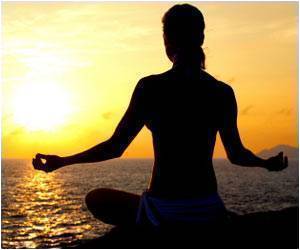- Yoga: What You Need To Know - (https://nccih.nih.gov/health/yoga/introduction.htm)
- The Benefits of Yoga - (https://osteopathic.org/what-is-osteopathic-medicine/benefits-of-yoga/)
Yoga or Pilates?
Yoga and Pilates are two of the most popular of all low-impact exercise activities among fitness enthusiasts across the world. Die-hard adherents of both disciplines often tend to get caught up in the rhetoric and compete to portray their discipline as being the better choice.
For a fitness newbie, choosing between yoga and Pilates can be pretty daunting as the truth is often buried in gimmickry, rhetoric and posturing. The truth is both yoga and Pilates have a lot in common and there’s a lot that can be gained from both disciplines. No one should be forced to choose one over the other based on hearsay alone.
To get started, be clear about your goals and what you hope to gain from the practice. Find out which discipline would better help you achieve those goals and most importantly, don’t shut out the offerings of one discipline simply because you chose the other. You don’t always have to be one side of the fence and when it comes to a fitness regime it may be better to be seated right up there on the fence!
There are plenty of people who practice a combination of both yoga and Pilates today, choosing techniques that work best to strike a balance.
Pilates Vs Yoga – Understanding the Differences
Both Pilates and yoga can be therapeutic and they attach great importance to flexibility, balance, strength, endurance and stress-relief. This said, there are some key differences that you should be aware of:
- Spiritualism: Yoga, with its ancient origins in India, is a deeply spiritual and meditative practice. While some branches of yoga focus solely on the physical, the discipline itself is inseparable from the mystical spiritualism of India. Chants and the alignment of chakras and such concepts have little in common with modern medicine, but they are rooted in spiritualism. This is the key difference between Pilates and yoga. As opposed to spiritualism, Pilates takes a scientific approach, with the discipline functioning more along the lines of physiotherapy. While there may not be any chanting or spiritualism involved in the practice, it does import great importance to mental health and it recognizes its connection to physical well-being.
- Alignment: While proper body alignment is stressed and the word is used like a mantra at yoga classes, the real emphasis has always been on connection with your chakras. While most of these yoga practices are based in spiritualism some are also validated today by science. In Pilates, however, the attention to anatomical alignment is far more important as compared to in yoga classes. The key difference here being, in a Pilates class, there will be a focus on specific muscle groups and the body, with no mention of chakras.

- Props and support: Yoga takes a very simplistic and minimalist approach to the use of any props and gear. In yoga, you may find props like blankets, blocks or bolsters and straps, all of which are used to help achieve certain poses or to increase comfort levels during practice. The Yoga mat is the most essential piece of gear, as is the Pilates work mat. When it comes to other props and devices however, Pilates employs devices that are a lot more complex, like the Pilates Cadillac. These devices typically use springs to create resistance when exercising. This is done with the aim of making the exercise more challenging and to promote muscle growth.
- Pacing: A yoga session is typically a lot more laid back and relaxing as compared to a Pilates class. This doesn’t mean that your body isn’t pushed to the limit; it simply means that it is a very different approach. While some disciplines of yoga like hot yoga and Ashtanga yoga require fast flowing fluid movements, on the whole yoga follows a more easy going slow paced approach. The emphasis is more on flexibility than speed. Each pose in yoga is held for a few breaths. Pilates is not rigorous but it can be fast paced as compared to yoga. This pacing also affects the amount of time for a session, with most Pilates classes lasting an hour, while a yoga class can go to an hour and a half.
Recognizing the Benefits of Pilates Vs Yoga
Pilates Benefits
- Improved Posture: Pilates encourages awareness about your posture and stresses the importance of proper body alignment and symmetry. This benefits of this reach far beyond the one hour of your Pilates class as what you learn here will help you correct your posture throughout the day. Most body aches, that affect those of us living sedentary lives occur because of bad posture. Common problems like neck aches, backaches and headaches can be easily resolved through postural changes and Pilates encourages and trains practitioners to self-correct.
- Strengthening: A Pilates workout involves slow and deliberate movements, but these movements are well thought out and designed to increase body strength. While they may not target a specific muscle group and make you buffed the way weight training would, they work to strengthen the abdominal and core muscles, making sure that your body is well toned and shapely, as opposed to bulky or top or bottom heavy.

- Improved Stamina: A Pilates workout involves a series of exercises with several repetitions and the duration and intensity of each technique or sequence is increased over time, thereby boosting endurance and stamina.
- Low stress and gentle: There’s a reason why Pilates is so widely used as a therapeutic aid for the rehabilitation of patients who suffer physical injuries or other debilitating conditions. The discipline itself evolved to address concerns about rehabilitation and recovery and many of the exercises are meant to be practiced in a seated or reclining position. They are low impact exercises and a workout is always planned based on the requirements of the practitioner.
Yoga Benefits
- Improved Fitness: Yoga’s combination of asanas or poses and pranayamas or breathing techniques helps to improve one’s flexibility and balance, while strengthening the muscles. Yoga will not add bulk to your muscles and is a low impact activity but it greatly improves strength, endurance and flexibility, making you less susceptible to injury and postural problems.
- Stress Reduction: While any exercise routine, especially low impact activities like Pilates can help to reduce stress, few are as effective as yoga. This is because meditation is central to the practice of yoga. Studies have proven the efficacy of yoga meditative practices as a technique to cope with stress and anxiety. This makes it therapeutic for anyone suffering from stress or anxiety disorders.

- Improved Breathing: Most of us accept that respiration is an involuntary action and it’s something we don’t pay much attention to. Yoga’s emphasis on breathing techniques and the synchronization of its workout or poses with these breathing techniques gives you improved control over your breathing and strengthens and improves respiratory function. Several studies have demonstrated that the practice of yoga breathing techniques can help improve the outcome of asthma patients, with a significant reduction in symptoms.
- Therapeutic uses: Just as Pilates has come to be integral to physiotherapy and as a rehabilitative tool, yoga is also gaining ground with greater recognition of its therapeutic potential. Some researchers suggest that the practice of yoga offers physiological aerobic benefits in combination with stress reduction, which is what may explain yoga’s cardiovascular risk effect. Certain yoga poses are also found to help strengthen the spine, while others help to strengthen the joints and can help to improve and maintain mobility in patients suffering from joint diseases.
Pilates Vs Yoga for Weight Loss
The benefits of yoga or Pilates for weight loss are purely incidental as neither discipline is meant specifically for this goal. While Pilates focus on strengthening the abdominal muscles and core, a Pilates workout is not a weight loss workout. It will help to tone those muscles and may reduce fat and give you shape but it will not burn those calories. Likewise, yoga will help to tone and stretch the muscles and can even strengthen abdominal muscles but it will not burn a huge amount of calories. This said, both practices can help with weight loss if used alongside activities like jogging, running or swimming. While cardio activities will help burn the calories, Pilates and yoga can help to build muscle and tone your body.

Which to Choose?
Making a choice should be something personal and not based on marketing or the comments of overzealous practitioners of either discipline. Both Pilates and yoga can help to improve your quality of live and overall wellbeing, although there may be some variation in the approaches that they take.
Keep in mind that Pilates borrows heavily from yoga, as it was influenced by the discipline but has evolved as a rehabilitative and strengthening workout. Like yoga, it stresses the mental and physical health connection and encourages and promotes concentration and focus.
Yoga is not as focused or structured as Pilates in some aspects, but it offers its practitioners a whole range of benefits and is also spiritual. Keep in mind that there are different types of yoga and there can be great variation even within the different schools of yoga.
If you’re not sure where to start, the best thing to do would be to give both disciplines a try. Both practices can be complementary to each other and taking up both could help you choose firsthand which suits you best. Better still, sign up for a Pilates and yoga fusion class, also popularly called yogalates or yogilates!










